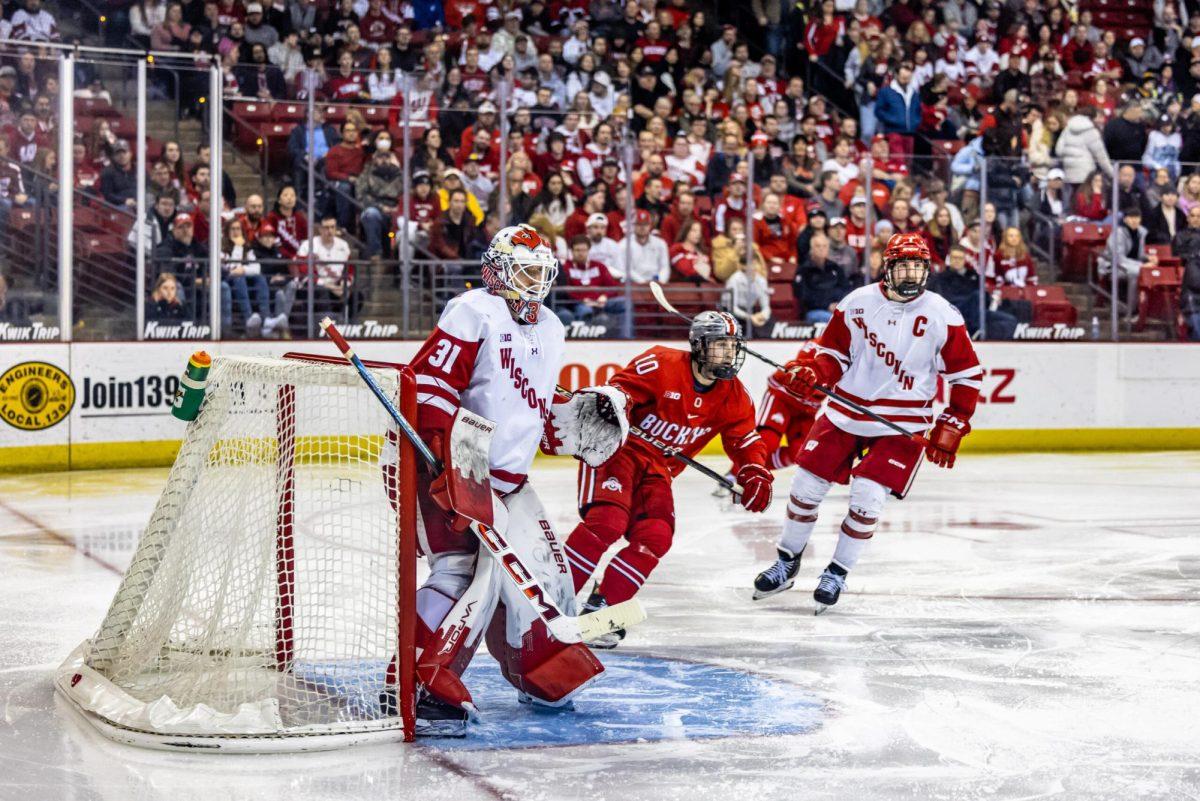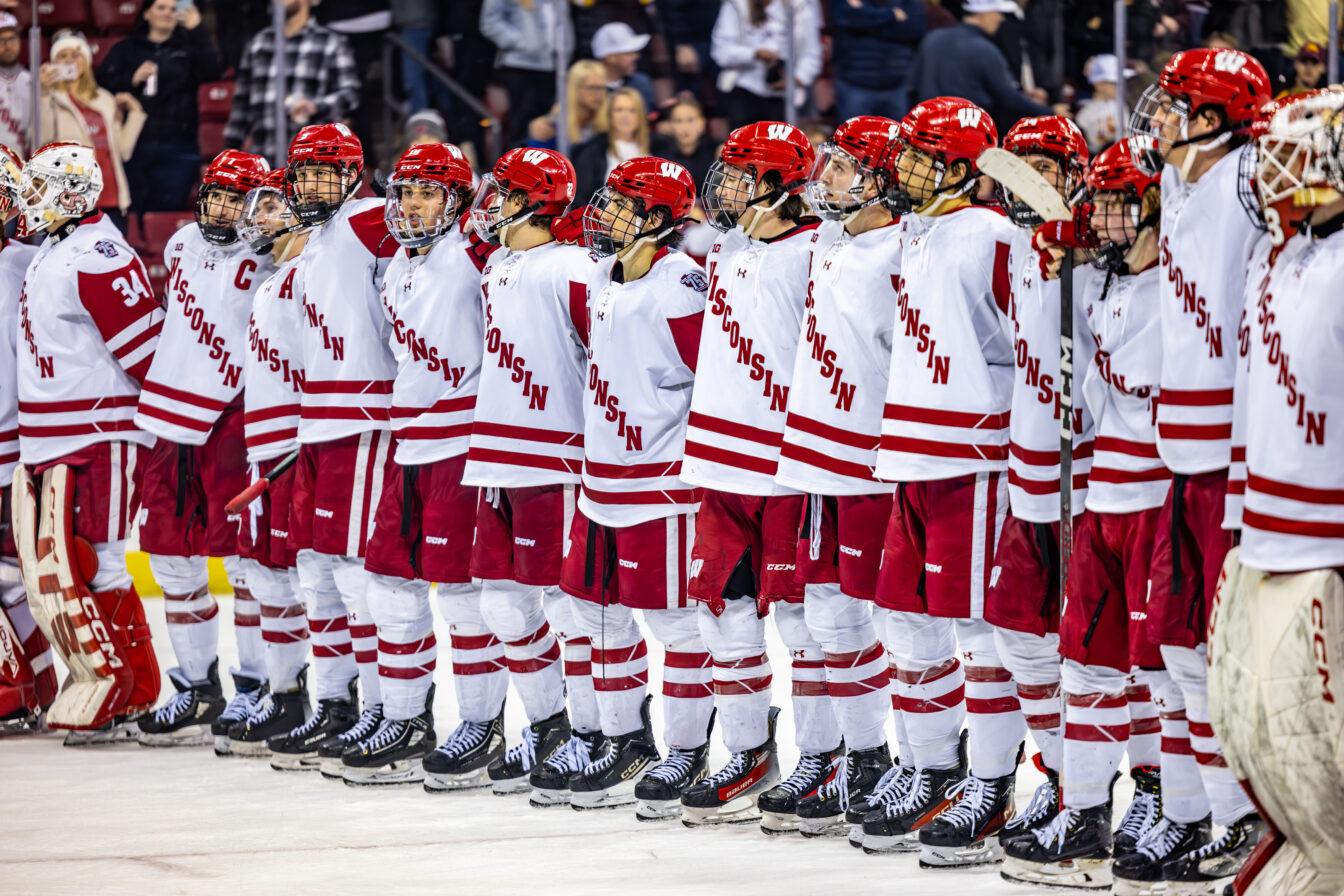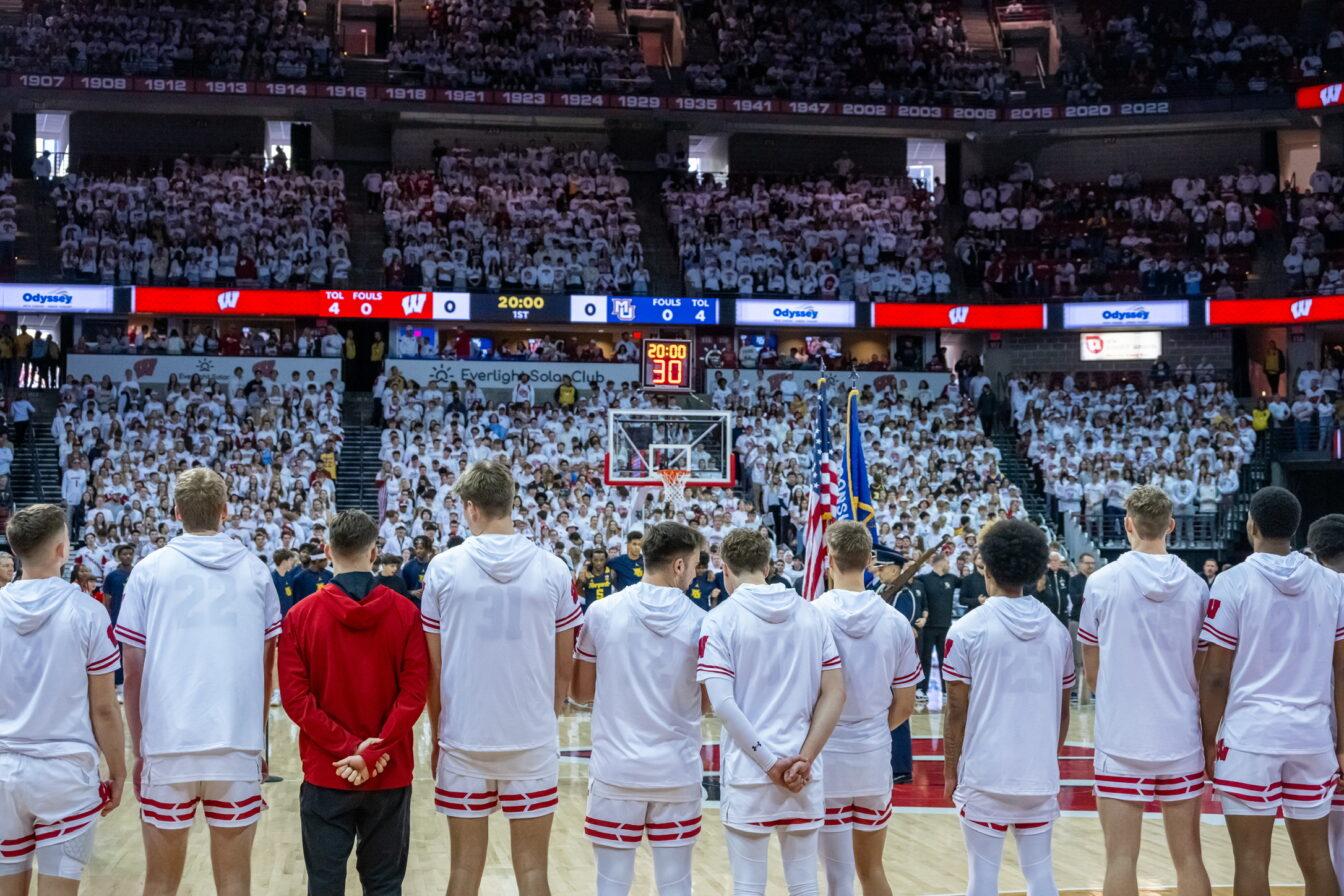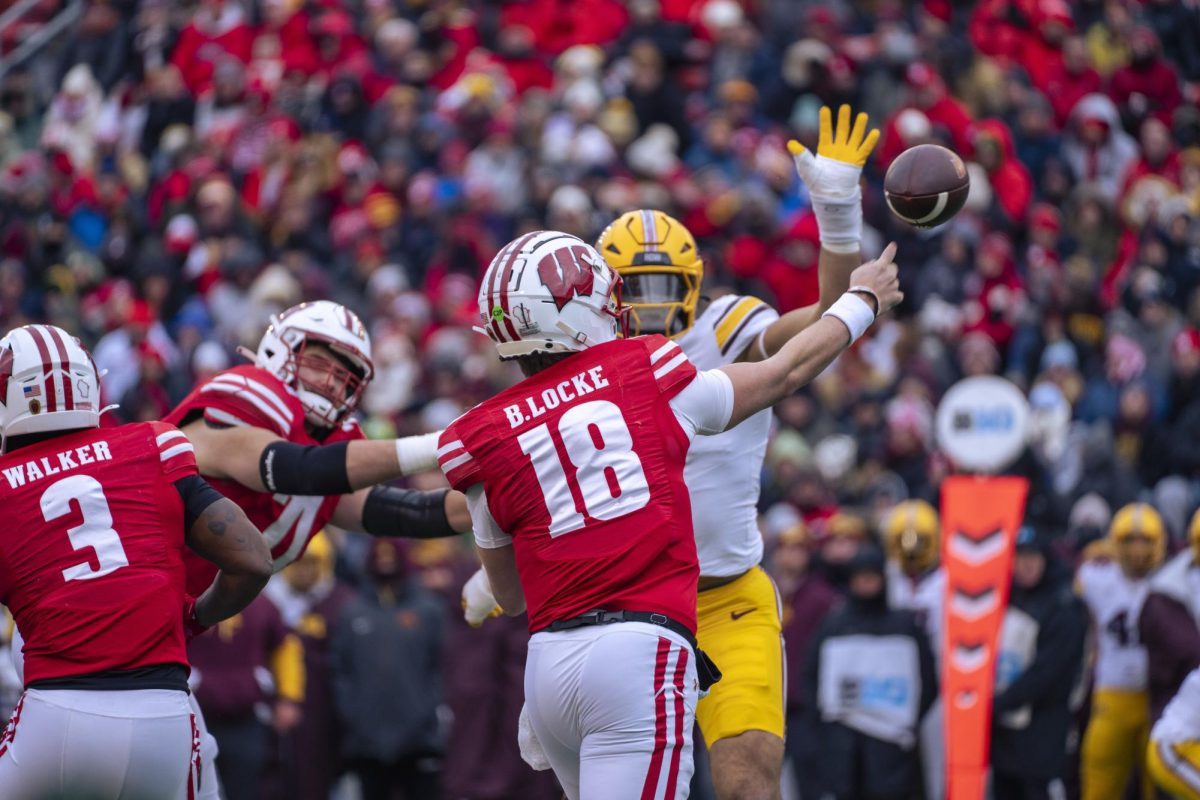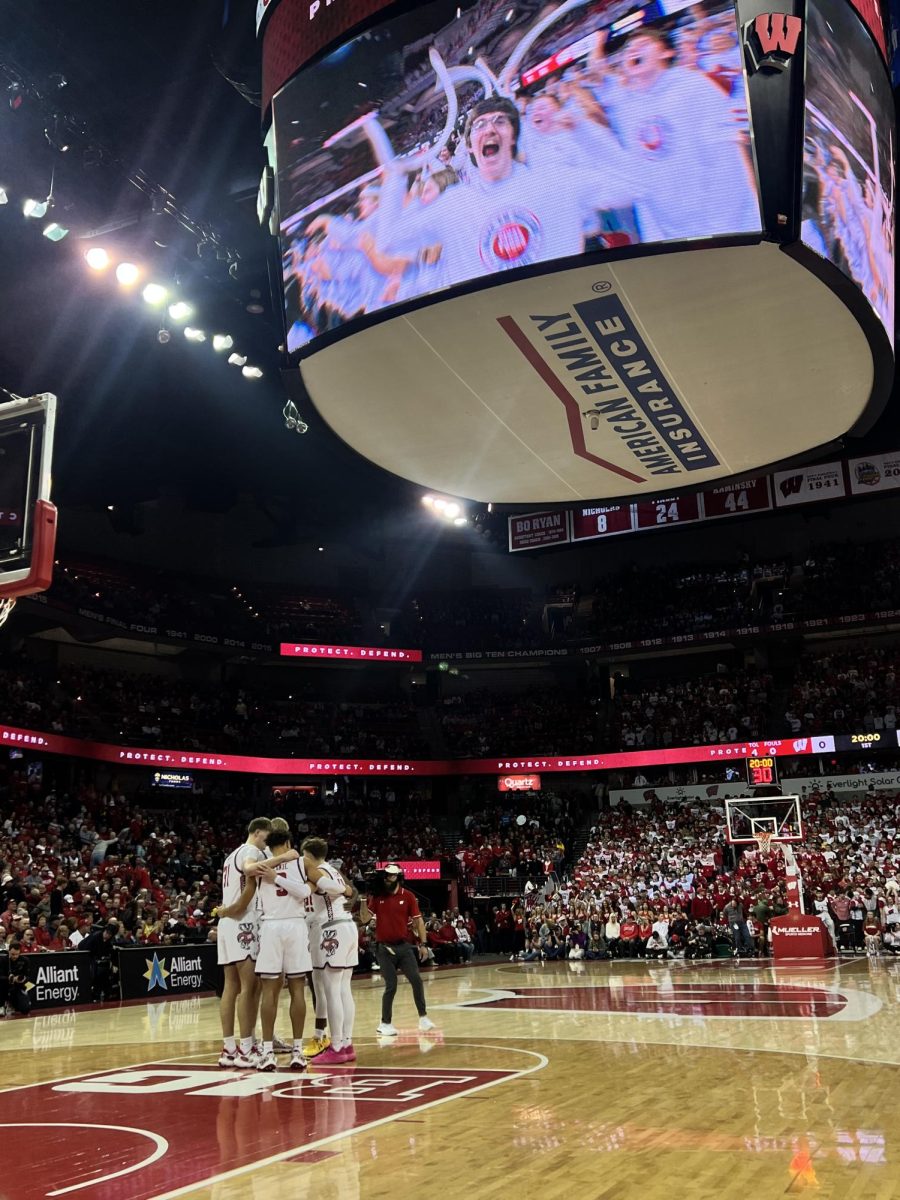At the beginning of the season, Mike Eaves said he would wait until winter break to assess his squad.
Now, the Wisconsin men’s hockey team is sitting at the midpoint of its season and its head coach still has, as he likes to say, some riddles to solve.
Both Eaves and his players knew coming into the season there would be growing pains – the Badgers lost seven seniors and four underclassmen from the group that came within one win of a seventh UW national title. The pangs are still there, but there are also signs that Wisconsin could be in position to put together a successful second half and possibly return to the NCAA tournament.
Despite going 2-4-2 in November, a stretch that included consecutive sweeps at the hands of North Dakota and Minnesota-Duluth, the Badgers put together a three-game winning streak to enter their winter break. A sweep of Bemidji State this past weekend has Eaves hopeful, once play resumes New Year’s Eve weekend.
“As we said to the boys after the game, we’re 10-7-3, 6-6-2 in the league. Not bad,” he said. “And our best hockey’s ahead of us – that’s our message as they leave. History tells us we’re going to come back, we’re going to be an older team, a more mature team – even though we’re young – we’ll be more mature because of the experiences we’ve had.
“I think we’ll springboard off that – history tells us that. So we look forward to the second half.”
Same old story
Much to the chagrin of the Badgers, most Friday home games have followed a simple formula: Fall behind early after a lackluster start and fight back into the game – often resulting in a too-little-too-late scenario.
Against Michigan Tech, UW fell behind 2-0 early before fighting back for a win. In a game against Michigan, the same start, but the result was a 4-4 tie.
In last Friday’s win over the Beavers, the Badgers fell behind 2-0 early just 2:30 into the game. UW managed to rally and win, but again it was a snapshot of the Badgers’ first half.
“Unfortunately, yeah. We’ve had a lot of bad starts, but we’ve also come back in a lot of games and had a lot of one-goal games that we lost,” sophomore assistant captain Craig Smith said after Saturday’s game. “We’ve got a young team and I was thinking about it in the locker room; I don’t remember ever having a bad start with last year’s team. I think it’s just a big thing about maturity and how much of a difference it makes having an older team.”
Eaves said the coaching staff is still trying to figure out a way to prevent the Badgers from coming out flat. Wisconsin sits tied for fifth in the WCHA with Colorado College and Minnesota. If the Badgers have any eventual designs of hosting a home playoff series, they need to stop digging themselves into holes and giving up points in the standings.
“We talk about to the kids that every game is a riddle and there’s no textbook answer – and every team is like that too,” Eaves said. “We’re trying to figure out what are the right buttons, what are the right things to do for this group to ensure… a good start on Fridays. And we’re still solving to work that riddle.”
Even it out
Usually when a team finds great success in its goaltending and special teams, it means its sitting in a favorable position.
Somehow, Wisconsin is the exception.
In goal, senior Scott Gudmandson has been exceptional, turning in standout performances in most of his outings. Gudmandson leads the WCHA with a 1.94 goals-against average and .930 save percentage, yet his record is just 7-5-1.
At times last season, Gudmandson looked hesitant, especially when playing the puck. That’s not the case anymore.
“What I like about Goody’s game is his command in the crease,” Eaves said. “His rebound control, his decisions with the puck.”
Last season, the Sherwood Park, Alberta native went 20-5-4. The main difference this season can be attributed less to Gudmandson’s play and more to the guys around him.
UW leads the WCHA in power-play percentage at 29.1 percent, and that figure is second in Division I. The Badgers have 30 goals with the man-advantage, most in the nation.
Solid goaltending, solid special teams, yet a 10-7-3 record?
“You look at that, you look at our record and you scratch your head a little bit,” Eaves said. “But it speaks to the close games that we’ve lost and haven’t found [a way to win]. If we had maybe found more offense five-on-five, maybe we would have won more of those games we lost by one goal.”
The luster of scoring 30 power-play goals is lost when it is taken into consideration that those account for 43.4 percent of UW’s goals – a remarkably high ratio.
Two other schools with similar power-play goal to total goal ratios, Princeton (44 percent) and Colorado College (41 percent) also sit exactly in the same position as Wisconsin – three games over .500.
Effectiveness on the power play is one thing, but if the Badgers want an extended run in the postseason, they can’t live and die by the man-advantage. Eaves called generating offense at even strength “an area of improvement,” as wins may come few and far between if the Badgers rely on their opponents to commit penalties.
“I don’t think it will get us to where we want to be, ultimately,” Eaves said.



